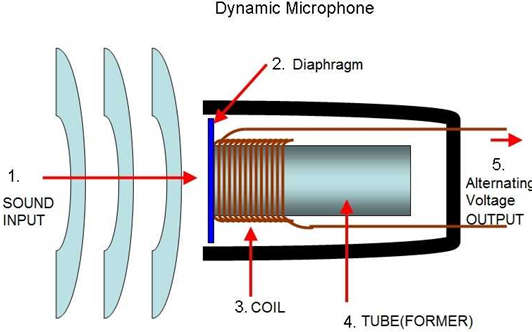- A SOUND SENSOR is a sensor that converts the sound signals or we can say vibrations created by sound into an electrical signal.
- It detects the sound wave through its intensity and accordingly converts it with the help of an inbuilt capacitor.

Working Principle of Sound Sensor
- The principle is similar to our working of ears.
- Sound is a waveform of energy that is produced in the form of mechanical vibration of moving air or water molecules.
- microphone- which consist of an in-built diaphragm that helps convert the sound vibrations which are created by moving air molecules into electrical signals.
- diaphragm converts these vibrations with the help of a coil. The diaphragm is made up of magnets coiled by metal wire.
- SOUND SENSOR HAVING MICROPHONE WITH MAGNETIC COIL
- The microphone has an inbuilt diaphragm. Whenever sound waves hit the diaphragm, magnets vibrate and at the same time coil induces the current.

SOUND SENSOR HAVING CAPACITIVE MICROPHONE
- Here, a capacitive microphone, peak detector, and an amplifier (LM386, LM393, etc.) that’s highly sensitive to sound.
- Such sound waves cause the diaphragm in the microphone to vibrate and are responsible for capacitance change. the change in capacitance is then amplified and digitized.
![]()
Applications of Sound Sensor
- 1. Detect sound pollution and more with SPCPM.
- A Solar Powered City Pollution Monitor (SPCPM) can help you sense overall air and sound quality in the city as sound pollution is a common issue nowadays.
![]()
- 2. Baby Monitor with Sound Sensor
- If you’re a parent or caretaker that’s always worrying about your baby regarding its health, temperature, environment, etc., this smart baby monitoring project is the one for you!
![]()
Other Applications:
- Security system(Office or Home)
- Home Automation
- Robot world
- Smart Phones
- sound recognition
- Audio amplifier
- Sound level recognition
